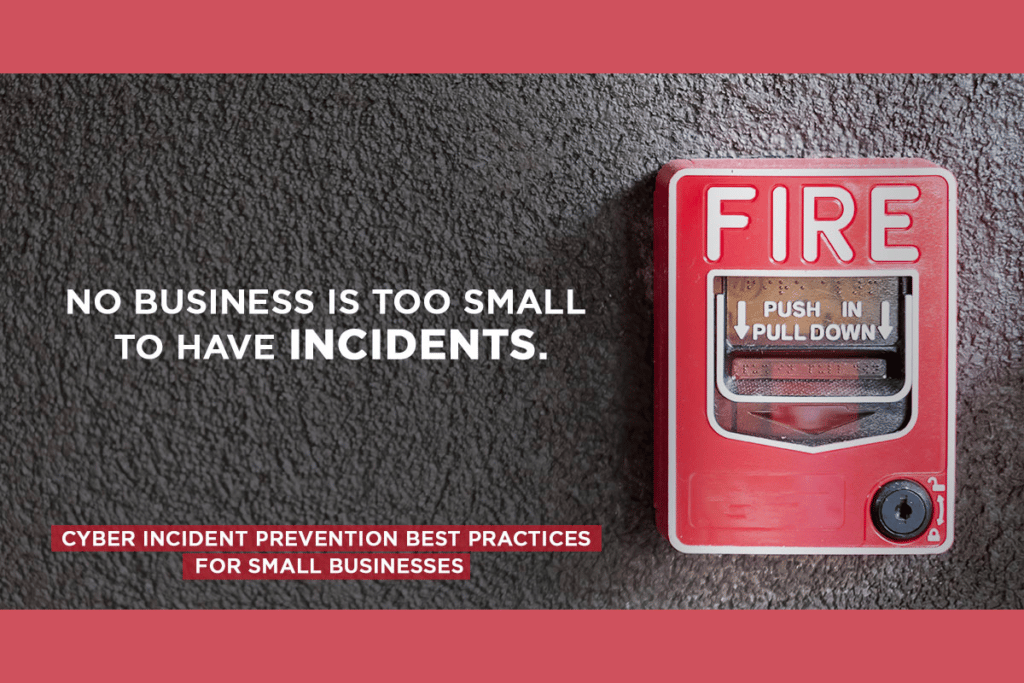As a small business owner, you may think you are “too small” to worry about small business cybersecurity. You may think cybercriminals only target giant, multimillion-dollar companies. However, this couldn’t be further from the truth. Although the media mainly focuses on attacks on big businesses, small businesses are low-hanging fruit for cybercriminals.
Cybercriminals know that small businesses are less likely to have strong security measures in place, making it easier for them to breach their data. In this blog post, you’ll find 9 best practices for small business cybersecurity to protect your business from the claws of cyber criminals.
9 Best Practices for Small Business Cybersecurity
While there is no single silver bullet for preventing all incidents, some best practices can help you reduce the risk of falling victim to a cyberattack.
Ensure your cybersecurity policy supports remote work
When implementing a cybersecurity policy supporting remote work, consider the following:
- How will employees access company resources off-site?
- What security measures should be put in place to protect company data?
- How will remote employees collaborate and share data?
Additionally, you should identify support mechanisms to help employees struggling to adjust to remote work. By taking these factors into account, you can create a cybersecurity policy that is productive, seamless, and secure.
Provide cybersecurity awareness training for employees
Implementing a security awareness training program for employees is critical in today’s digital age. As a responsible business executive, you must strive to ensure that the program is comprehensive, engaging, and adaptable to new threats.
Deploy software patches
Threats to your network security are becoming more prevalent as technology advances. That’s why it’s critical to keep your software up to date with the latest security patches.
There are two different ways to keep your software up to date. One way is to set your software to update automatically, while the other is to check for updates regularly manually.

Have active antivirus and antimalware protection
There are numerous antivirus and antimalware solutions in the market, so select one that is appropriate for your company. When doing so, you’ll have to consider the size of your company, the type of data you need to safeguard, and your budget.
Once you’ve decided on a solution, follow through with it. This follow-through includes installing the protection on all your company’s computers and keeping it updated.
Implement multifactor authentication (MFA)
Multifactor authentication is a security measure that requires users to provide more than one form of identification when accessing data, thus reducing the chances of unauthorized data access. MFA can include something that the user knows (like a password), something that the user has (like a security token), or something that the user is (like a fingerprint).
Use a virtual private network (VPN)
A virtual private network encrypts your company’s data and allows you to control who has access to it. VPNs can help prevent data breaches and keep your company’s information safe. However, make sure to choose a reputable provider that offers robust security features.
Deploy single-sign-on (SSO) and password management
A single sign-on solution can make your users’ login process more accessible. SSO streamlines the login process by allowing users to log in to a central system once and access all the other applications and systems they require. In addition to SSO, a password management solution simplifies the user login process by allowing them to manage their passwords more securely and efficiently.
Encrypt your data
Data encryption is converting information into a code that can only be deciphered by someone with the key to decrypt it. Use encryption to prevent unauthorized individuals from accessing the information. Data encryption is a critical tool in cybersecurity since it can help reduce the exposure of your data to risks and ensure compliance with data privacy regulations.
Have backup and disaster recovery solutions
It is critical to have backup and disaster recovery solutions in place in case of system failure or data loss. Make sure to research the different options and find the best solution for your small business cybersecurity arrangement. Test your backup and disaster recovery solutions regularly to ensure they are working correctly.
Collaborate for Success
You may not have the time or expertise to implement effective cyber incident prevention best practices if you’re a small business owner. However, you can leverage our experience to build a digital fortress around your business by partnering with us. Contact us today to find out how we can help you protect your business against potential cyber threats.


